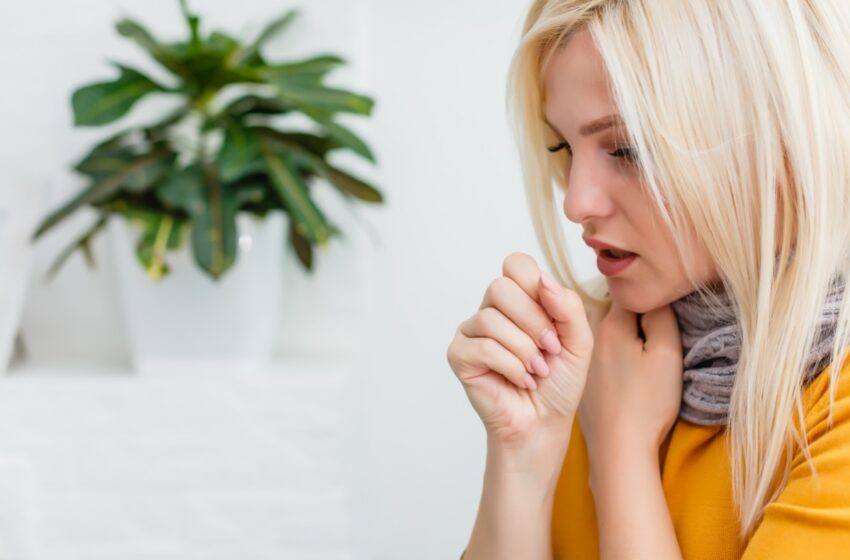
Sure Signs You’ve Already Had COVID, Says Virus Expert — Eat This Not That
COVID restrictions have been significantly reduced in the United States, but the pandemic isn’t over. Although cases have been reduced drastically, the virus hasn’t been eradicated and people are still getting infected daily. That said, many will fortunately experience a mild case of COVID and some won’t even realize they’ve had it. If you’re questioning whether you had COVID, Hannah Newman, the director of infection prevention at Lenox Hill Hospital tells Eat This, Not That! Health signs of the virus to watch out for and what everyone should know about COVID right now. Read on—and to ensure your health and the health of others, don’t miss these Sure Signs You’ve Already Had COVID.


Newman says, “If you had a really bad cold while COVID was circulating, your cold may likely have been COVID-19. Influenza rates have been unprecedentedly low, largely thanks to all of the protective measures like mask wearing and social distancing that were put into place over the last 2 years. Though Influenza spreads in the same way as COVID-19, it is less likely to jump from person-to-person. Also, COVID can stick around longer than the few days that a regular cold generally persists. Obviously this can be confirmed if accompanied by a positive test. “


“If you had a feeling like you couldn’t breathe, it may have been due to COVID-19. This isn’t a typical symptom or a cold or the flu, but common with those who suffer from COVID-19,” states Newman.


According to Newman, “Changes in taste or smell are hallmark symptoms of COVID-19 that usually go back to normal over time, but can linger for weeks or months. Studies show that more than half of people who test positive for COVID-19 experience changes in their taste and smell. Anosmia is the total loss of smell, but distortion of taste or smell have also been commonly reported. Parosmia is a distortion in smell perception for existing odors. For example, things that once smelled normal might suddenly smell like burning cigarettes, rotten meat, or otherwise unpleasant. Phantosmia is a condition that causes you to smell these odors that aren’t actually present. Think of it as an olfactory hallucination.”


“A dry cough that persists for a long period of time is often a sign of COVID. It can start mildly then worsen after a week or so,” Newman says.
RELATED: I Have Omicron and This is What it Feels Like


Newman explains, “COVID can be transmitted by aerosols or contact with the mucous membranes of the eyes and cause ocular issues. Conjunctivitis (or pinkeye), watery eyes, dry eyes, swelling, or increased eye secretions may have been due to COVID, especially if paired with other typical COVID symptoms.”
RELATED: COVID Symptoms Usually Appear Like This


Newman reveals, “BA.2 has taken over as the dominant COVID-19 strain in the United States. This is a subvariant of Omicron (BA.1) that circulated in the United States a few months ago. BA.2 has been shown to be more transmissible (even from the original Omicron variant), but it does not appear to cause more severe outcomes at this time. Reinfection with BA.2 after BA.1 is not impossible, but very rare. However, it is certainly more possible if you were infected with Delta or an even earlier strain.
Another important factor to note about BA.2 is that it has been dubbed ‘the stealth Omicron’ due to the fact that it’s harder to pick up by common PCR tests. Therefore, if you are experiencing symptoms consistent with COVID and test negative, it is still a good idea to take protective measures and stay home (plus, we still don’t want to spread other viral illnesses!)
The most sustainable and effective intervention we have is vaccination, and keeping up-to-date with vaccines and booster is our best measure to protect ourselves against severe disease and hospitalization. Plus, it helps break the chain of transmission to others who may be at risk. Additionally, we can continue taking protective measures that we have known to be effective since the beginning of the pandemic: wearing a mask, socially distancing, increasing ventilation and gathering outdoors when possible, and staying home when we feel sick. Thankfully, testing is also much more accessible now.” And to protect your life and the lives of others, don’t visit any of these 35 Places You’re Most Likely to Catch COVID.
